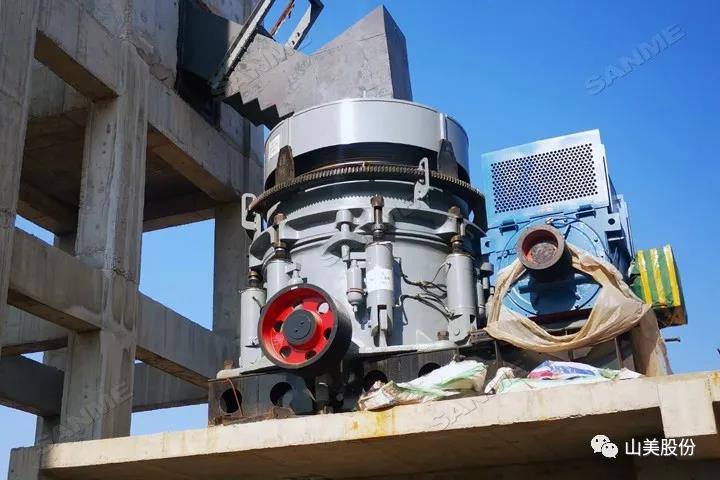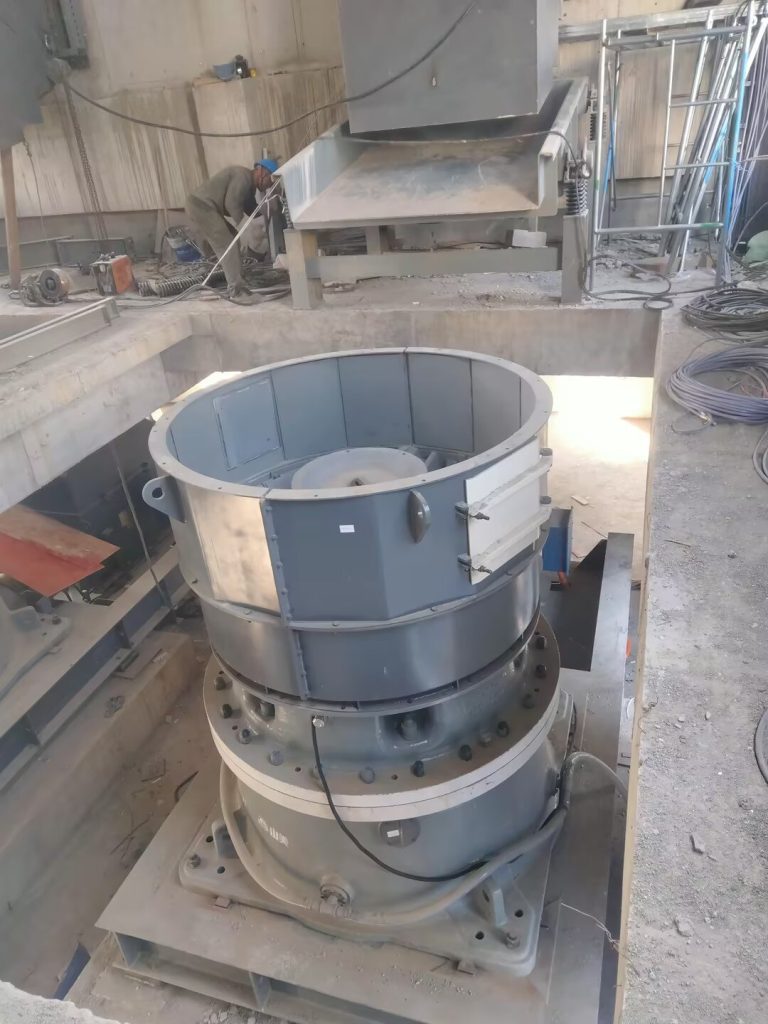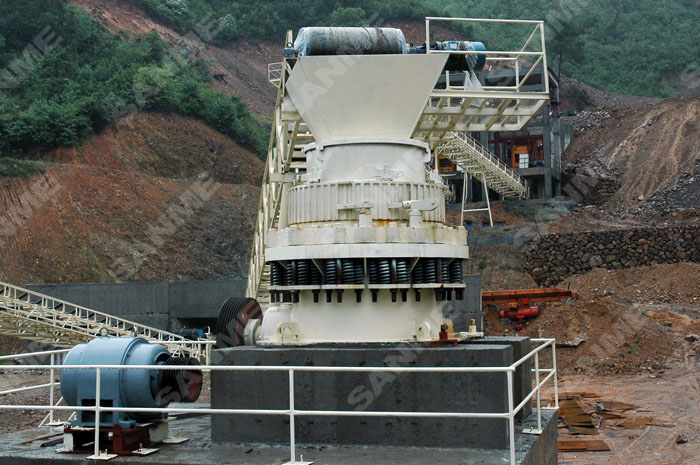
400Kw Metallurgy Feeding 460mm Cone Crusher Machine
2025-8-26
Cone crusher crushing chambers are primarily categorized into standard, intermediate (medium), and short-head types. These chambers differ significantly in their structural features, applicable scenarios, and crushing performance, as follows:
1. Standard Crushing Chamber
Structural Features: Short parallel belts and a larger feed opening allow for larger ores (e.g., 150-300mm diameter) to enter the crushing chamber.
Crushing Principle and Performance: Ore is primarily crushed within the crushing chamber by the squeezing action of the rotating and fixed cones. Due to the short parallel belts, the ore residence time is shortened, resulting in a relatively low crushing ratio.
Application: Suitable for coarse crushing, reducing larger ores to medium-sized particles (typically around 30-60mm), providing the appropriate ore size for subsequent secondary or fine crushing.

2. Intermediate (Medium) Crushing Chamber
Structural Features: The parallel belts are of moderate length, and the feed opening size is between the standard and short-head types. This type of crushing chamber can process coarsely crushed ore (particle size approximately 60-180mm).
Crushing Principle and Effect: The ore is subjected to the same compression force of the moving and fixed cones. Due to the moderate parallel belt length, the ore residence time is also moderate, achieving a moderate crushing ratio.
Application: Primarily used for secondary crushing, further crushing coarsely crushed ore (product particle size is generally around 10-30mm) to prepare suitable raw materials for fine crushing.

3. Short-head Crushing Chamber
Structural Features: The parallel belts are longer, and the feed opening size is the smallest. This type of crushing chamber is typically used for processing smaller ore (e.g., 30-80mm). The smaller feed opening prevents the entry of oversized ore, which could cause blockage or ineffective crushing. Crushing Principle and Effect: The long parallel belts allow the ore to remain in the crushing chamber for a longer time, subjecting it to multiple compression and grinding actions by the rotating and fixed cones, resulting in a higher crushing ratio.

Application: Suitable for fine crushing operations, it can crush ore into smaller particle sizes (typically around 3-10mm), producing a finer and more uniform product, meeting the needs of production processes with high particle size requirements.
Key Criteria for Chamber Selection: Feed Particle Size: Choose the standard type for coarse crushing, the intermediate type for medium crushing, and the short-head type for fine crushing.
Product Particle Size Requirements: The short-head type is preferred for uniform and fine particle size; medium or standard types are preferred for more relaxed particle size requirements.
Production Capacity: The longer the parallel belts, the higher the crushing ratio, but the lower the throughput. The selection should be balanced based on production capacity requirements.